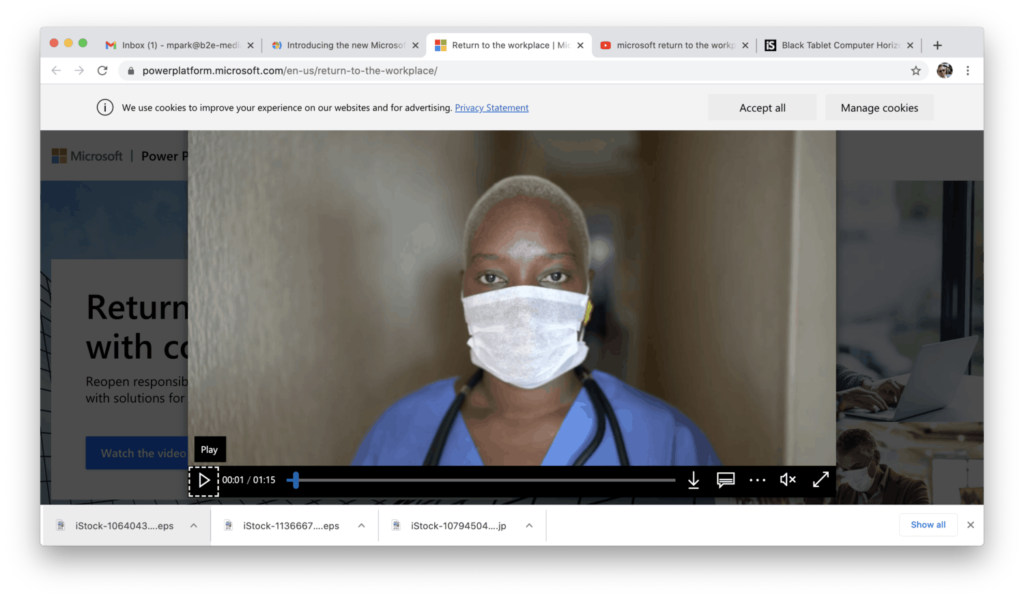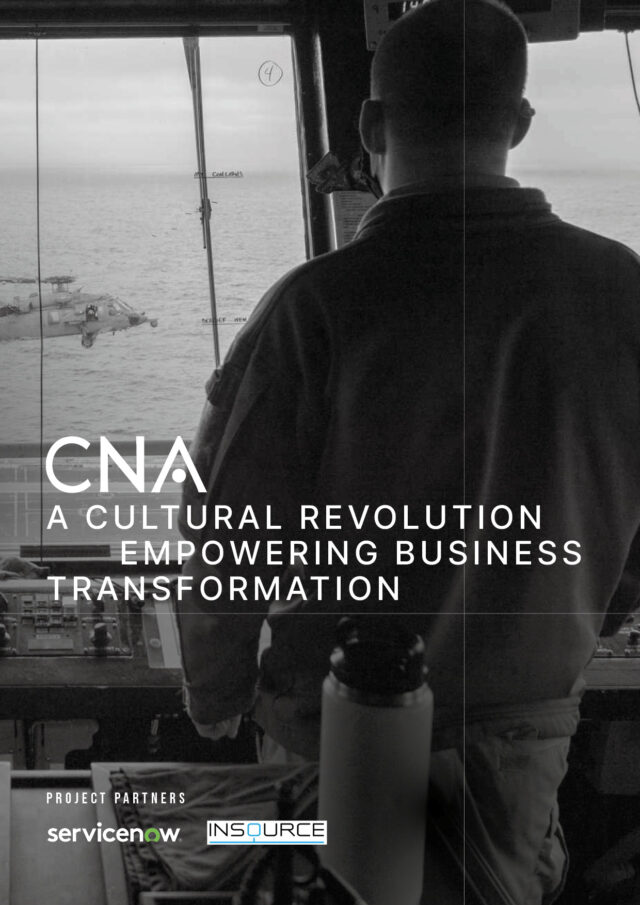The need for transformation is greater now than ever before. We are facing problems around the world that can be solved only through innovation: whether it is unaffordable and unavailable health care or energy usage that outpaces what we can support, to education systems that fail many students, to companies and organizations whose traditional setup are being disrupted by new emergent technologies or demographic change or global pandemic like COVID-19. All these problems have people at their heart. They require human-centered, creative, iterative and practical approaches to find the best ideas and solutions that will democratize the benefits of technology and bring in equity to all.

Design thinking is just such an approach to innovation. It requires a different type of leadership style and culture in place; an effective innovation culture is one where we are willing to set aside our initial conception or understanding of what the problem is. Where we lean in with curiosity and observe and study ourselves on how users experience the problem in the real world; a process that allows us to develop empathy for their situation and then we can figure out what creates value for their customers. We have all built the next version of our service or product by looking at the competitive landscape and gaps in our products and have had success as we’ve added value. At a large company like Microsoft there is a need to continue to do that and balance that with discovery-based innovation. True innovation comes about when you apply a systematic methodology like design thinking to discover and solve unarticulated and latent user needs. Leaders now look to innovation as a principal source of differentiation and competitive advantage.

Design thinking used to be the process of just creating designs potentially limited to design discipline. Today it is broadly used as a systematic process that is reliable and repeatable for creating solutions utilizing creative problem-solving techniques where all disciplines participate. It is not about validating preconceived hypotheses but to help experimenters learn something new from each iteration. It is powered by thorough understanding and through direct observation, of what people want and need in their lives and what they like or dislike about the way particular solutions and products are made, packaged, marketed, sold and supported. Simply put, it is a discipline that uses the designer’s sensibility and methods to match people’s needs with what is a technologically feasible and viable business strategy that converts into customer value and market opportunity.

I have lead multiple strategic efforts at Microsoft over the last 18 years and every time they’ve created something truly innovative and differentiated, it was the outcome of the team going through the human-centered discovery process, numerous iterative cycles and hard work of prototyping, testing and refinement. I was recently asked to lead creation of solutions for healthcare organizations, local & state government and global organizations dealing with the disruption and uncertainty caused by the current global pandemic. My team released three high-value solutions: Return Back To Work, Hospital Emergency Response Solution and Regional Emergency Response & Monitoring solution that organizations could rely on for their day-to-day operations. In each of these cases, even when time was of crucial essence we always had what we called ‘client zero’ from day one that we engaged with multiple times a week through all the phases of exploring the problem, creating multiple concepts and prototypes and finally narrowing it down to our first alpha we wanted to start the release with. Similarly, I contributed to the new revolution we are seeing around remote work or the “new norm” and the use of Microsoft Teams by releasing modern powerful Microsoft Power Platform horizontal apps in Teams to spark users’ and organizations’ imagination around how to increase their tech intensity and digitize their business processes in Teams. Prior to that my team reimagined and delivered how time management surfaces on mobile and desktop web evolve to meet the needs of our users across work and life. We managed to do all these innovations while still balancing and addressing key customer asks and gaps in our products.
So, let’s take a quick sneak peek into what a systematic approach looks like. It is divided into 3 phases; Explore, Create and Implement. I am so enthusiastic and passionate regarding the explorative and creative element to the first two phases. The Exploration phase is where you need to fall in love with the problem at hand and not jump quickly to designing the solution. This involves the use of lots of different techniques to remove your own biases by
- observation and interviews with all stakeholders
- creating stakeholder maps
- decomposition of the interview into insights and patterns of user needs
- journey maps for jobs to be done across multiple user types and
- clearly documenting main and lead user types and their emotional and functional needs.
The outcome of this phase is clearly articulate target users (mainstream users, lead users and extreme users), emotional, functional and latent needs and to identify opportunities to go after.
The second phase is Create where you brainstorm together as a team to generate ideas. The best results come when it is an inclusive exercise by all disciplines with the combination of giving folks focused individual deep-thinking exploration to coming together and brainstorming and building on each other’s ideas. Brainstorming, storyboarding, sketching and decomposition of user feedback are a few techniques to apply. Then we group the ideas into themes to see concepts developing and start doing quick early prototyping to get user feedback. We’ve learned through various efforts that quick early prototyping and storyboarding and getting weekly feedback from users early is an absolute must as it allows us to course correct and fail forward fast as we might not have understood user needs well or risk creating high-fidelity prototypes that we fall in love with. The goal here is to test for learning and not test to validate your idea. We iteratively develop the concepts with user feedback and end up with an alpha prototype after several iterations. That alpha prototype then goes through visual designs and aesthetic exploration to spark emotional connection.

Then we have our classic Implementation phase where we build the actual release candidate, documentation, marketing site and partner & field strategy. There are times my team and I have identified the needs, and created a product that fulfills it and it still doesn’t take off as well as expected. In some cases, it didn’t take off because there’s no emotional connection. So, aesthetics does play a role. Great design satisfies both our needs and our desires. Time and again we see successful products are not only first to market but first to appeal to us emotionally and functionally. I hear a lot that maybe enterprise software doesn’t need the consumer gradable experience. But we’ve learned that this is not true as the demographics change on us and people demand similar easy-to-use experiences across both work and life. In fact, I would argue it is a great strategy to leverage the user experience habits our users have formed in school and their personal life and bring it to work for easy user adoption and frictionless onboarding.
So, you can see that innovation is not a random spark of brilliance but a systematic process through multiple iterative phases with clear activities and outcomes defined that is reliable and repeatable so we can create innovation on demand.

So why is it hard to innovate and why is everyone not able to do it? Firstly, design thinking is hard because it is unnatural to put your bias aside. It is unnatural to not fall in love with your idea. It is unnatural to conclude what you have been exploring is not worth developing. To overcome that you have to apply a systematic process and framework that the team goes through that is proven to remove bias. Secondly, it’s important to develop a design thinker’s mindset across all disciplines and up and down your leadership chain. A great design thinker is empathetic and can imagine the world from multiple perspectives and can envision solutions that are inherently desirable and meet explicit and latent needs. They are optimistic, no matter how challenging the constraints are in that at least one potential solution is better than the existing alternatives. They obsess about every detail of the experience to reduce cognitive overload and user adoption. They experiment and iterate fast and are very collaborative. They are not afraid to put some out that is not perfect and polished to learn. They lead with curiosity and not judgement. We know significant innovations don’t come from incremental tweaks, we need leaders and individuals with a mindset that can explore constraints in creative ways. And lastly, I learned a useful framework we learned at Mastering Design Thinking at MIT; the three-innovation challenge framework to think about what constitutes truly successful innovation. Real-Win-Worth it framework. The first dimension is if it’s real. Is there a market for it? Is this addressing a real customer need? How will you add value to users? It requires you to talk and observe actual customers; mainstream users, lead users and extreme users across different market segments to understand their primary, secondary and latent needs. The second dimension is if you can win. Can we develop a solution that is technically feasible and also better than what the competition or whatever the user is habitual to today? The third dimension is if it is worth it. Is there a viable and sustainable business model? Will we be able to make profit or gain market or user share to pay back all the investments we are making. Here we also think about the environmental sustainability impact of our product and service and its supporting ecosystem.
My current role sees me working with AI in the customer data platform and customer experience space, helping organizations glean insights into their customers. Microsoft customers are large enterprises who through many years and acquisitions have data about their customers locked into many different data silos. It can be customer interaction data from different transactional systems like point of sales, customer service, marketing automation to behavioral signals coming from the company’s website and mobile app. That data can reveal how customers are experiencing your product and services individually and holistically. Today, that data is all over the place and they don’t have one unified view that every team can leverage as they make business decisions to better serve their customers. We take those data silos and through our AI powered Dynamics Customer Insights product, unify all this data in a very seamless way and generate insights. What I am most excited about is the opportunity of how we democratize AI in a responsible way so regular business users can take advantage of it without being a data scientist. It’s this time to value and empower the business users with data and AI that is easy to adopt and earns their trust is what excites me to come to work every day. Trust is a priceless commodity and is by far the most powerful human emotion our Microsoft brand stands for.

I am so happy to be contributing and evangelizing the Chief Experience Officer leadership role; a unique brand of Product Management senior leaders that will become more and more critical and common as leaders leverage them as part of their differentiated strategy to deliver successful disruptive innovation.









